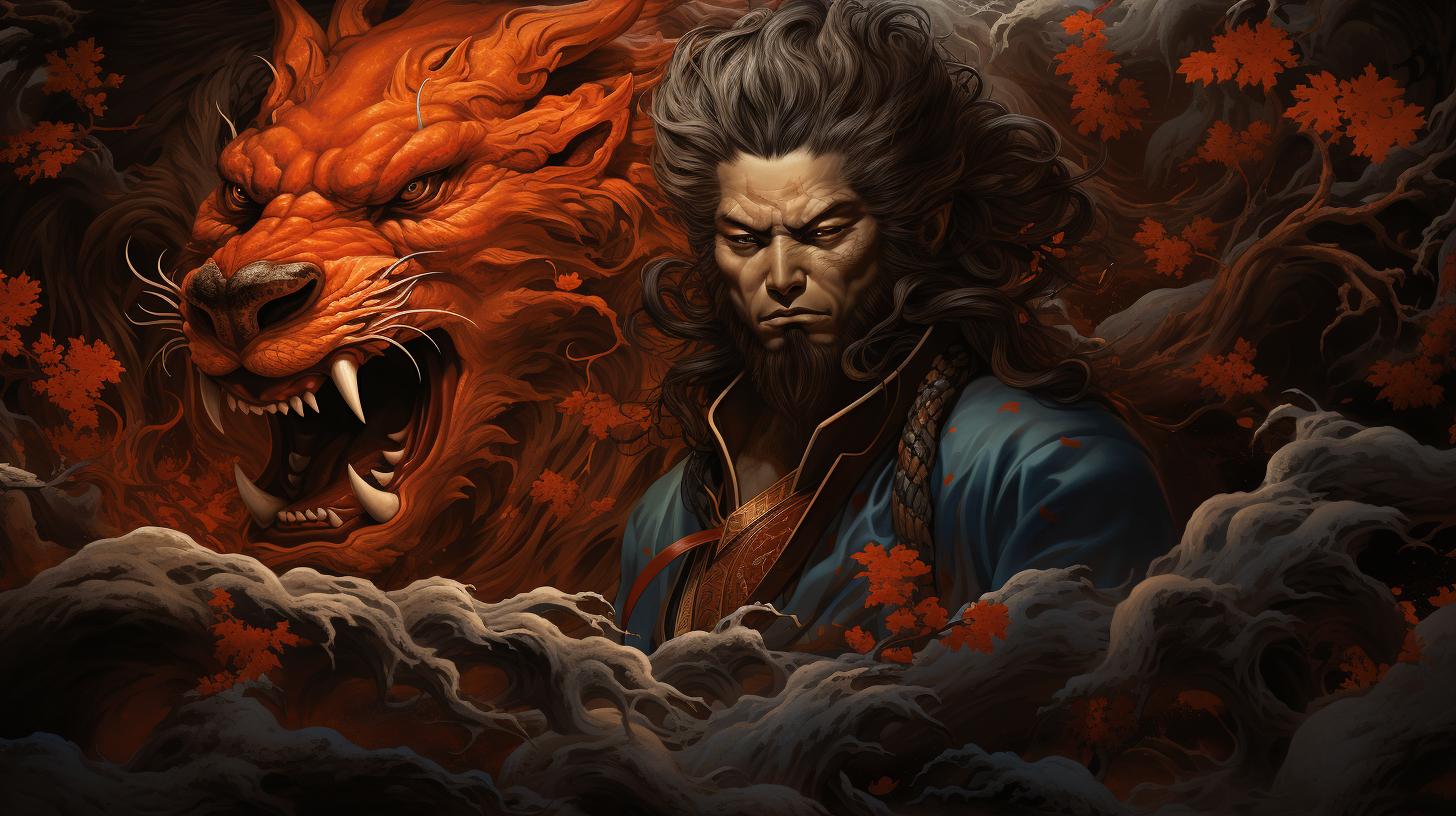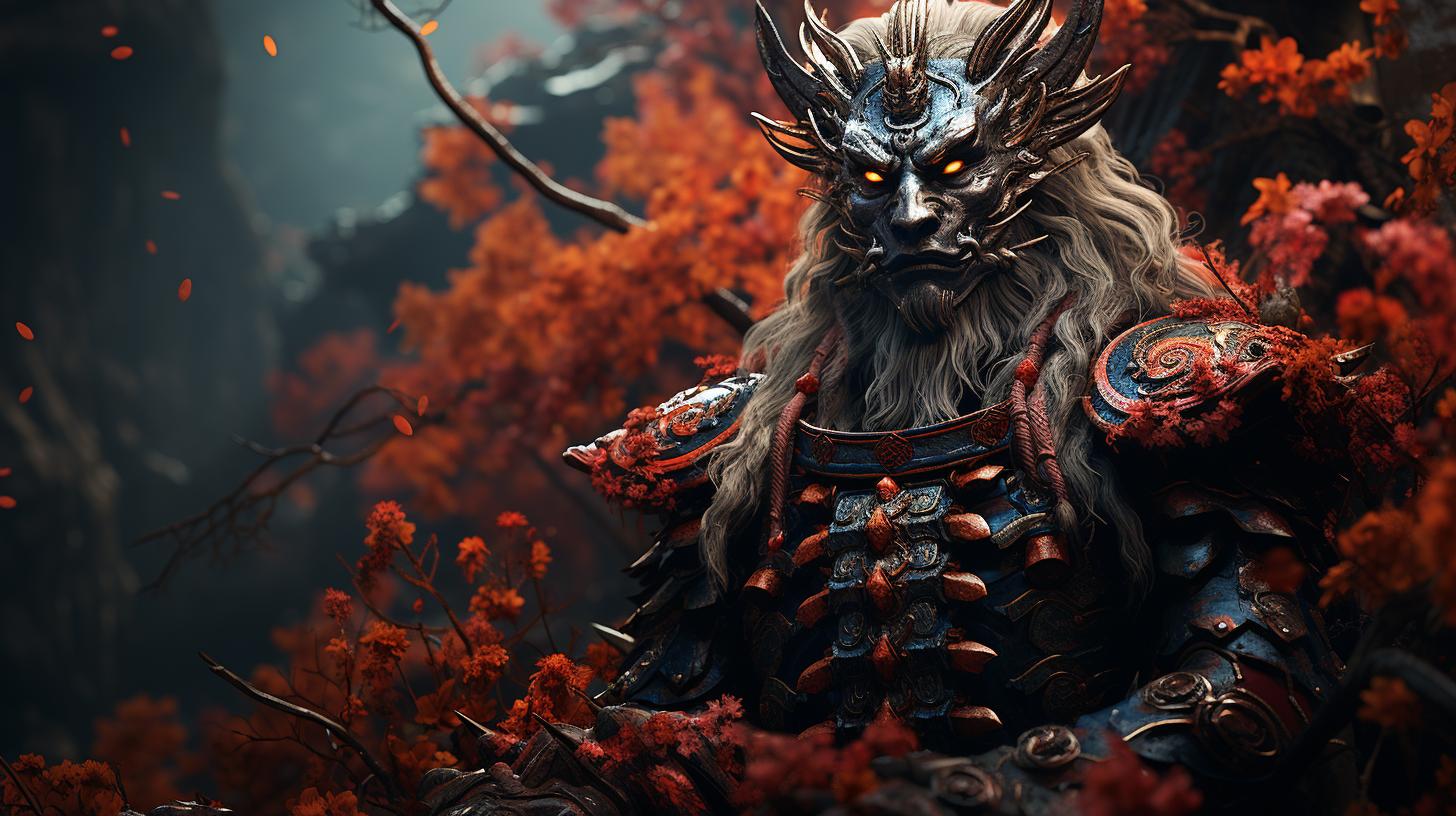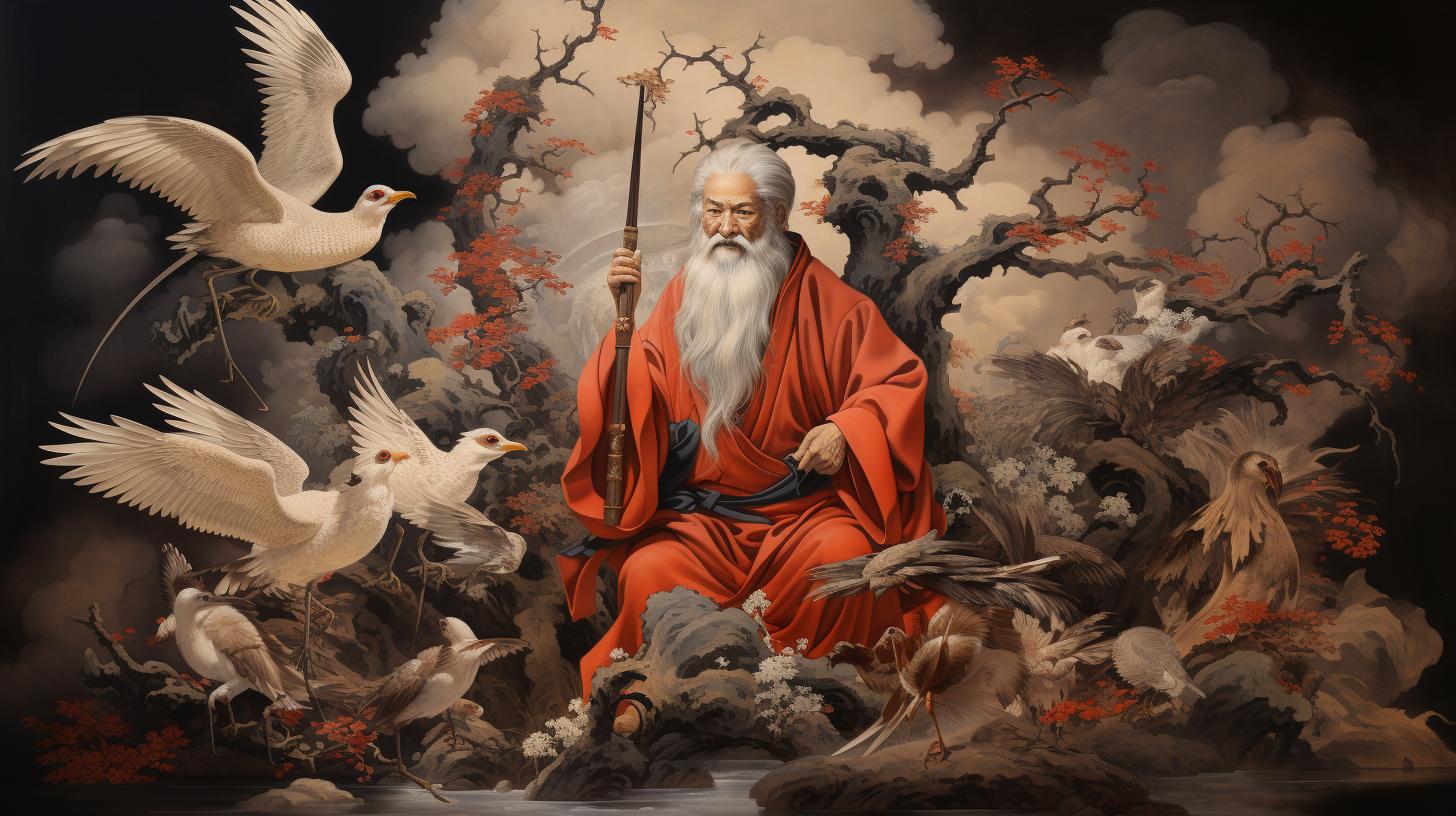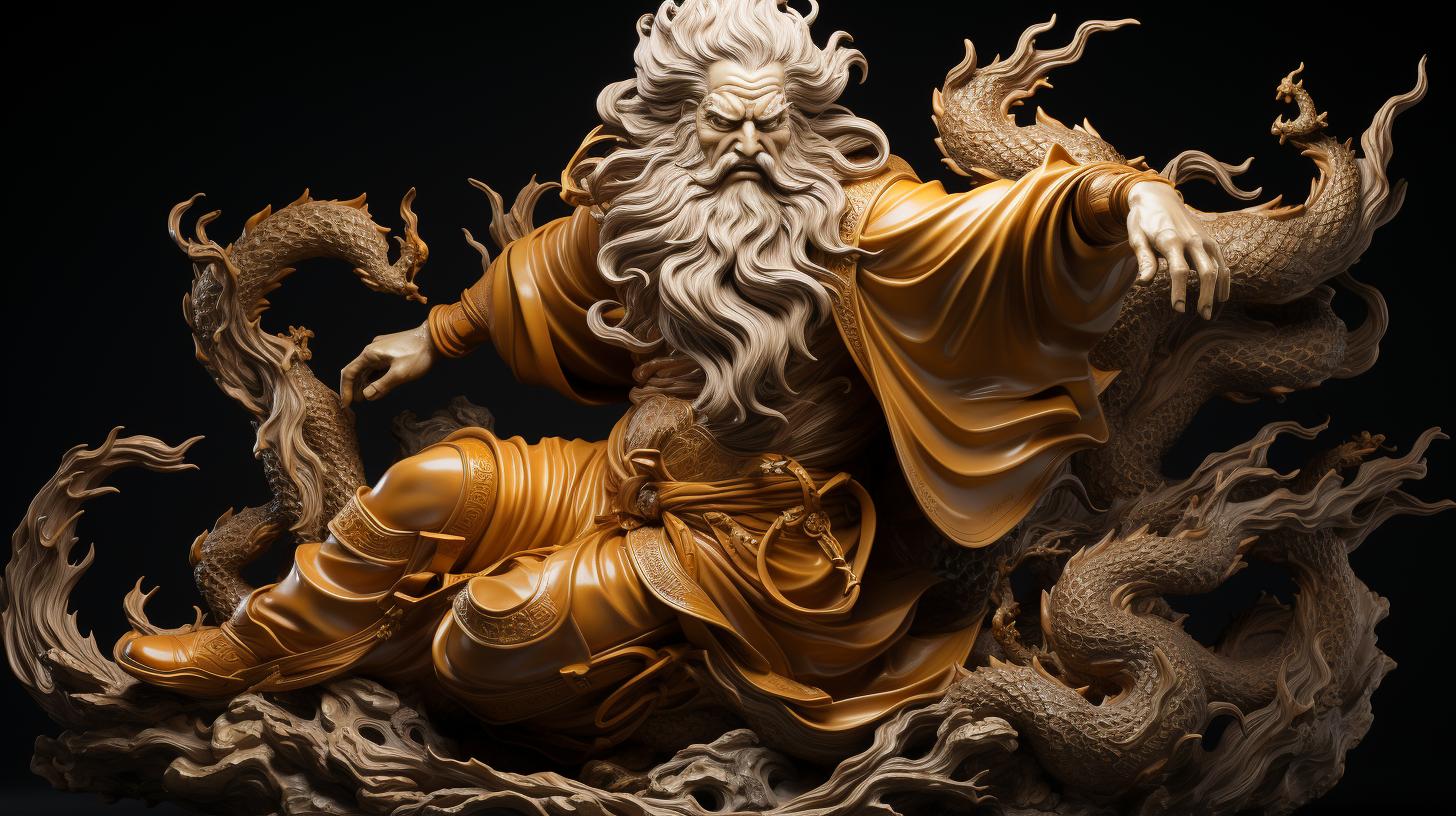Bishamonten God: The Japanese Deity That Protects Warriors and Sacred Places

Bishamonten God is a powerful and revered deity in Japanese mythology and culture. He is best known as the protector of warriors and sacred places, and as one of the Seven Lucky Gods.
Bishamonten is associated with wealth and good fortune, and his influence can be seen in art, literature, and popular culture throughout East Asia. With ties to Buddhism, Hinduism, and other religions, Bishamonten’s legacy continues to impact society today.
Explore the origins and symbolism of this fascinating figure in our article on Bishamonten God.
Who is Bishamonten?
Bishamonten is a prominent Japanese deity revered for his role as protector of warriors and sacred locations. His origins can be traced back to India, where he was originally known as Vaisravana, one of the Four Heavenly Kings in Buddhism.
Over time, his legend spread throughout East Asia, eventually evolving into the unique character known as Bishamonten in Japan.
Bishamonten’s origins
Bishamonten’s origins are rooted in Hindu and Buddhist traditions, with ties to the Indian god of wealth, Kubera, and the Four Heavenly Kings of Buddhism. He is often depicted wearing armor, symbolizing his historical association with warriors.
Bishamonten’s attributes and symbolism
- Bishamonten is associated with the north and protects the northern regions of Japan.
- He is known as a guardian of Buddhist teachings and a protector of the Four Continents.
- Bishamonten is often depicted holding a pagoda, which represents the Divine Treasury, and a spear, which he uses to protect sacred sites.
- His portrayal also includes a yellow complexion, symbolizing his association with wealth and prosperity.
- In Japanese culture, Bishamonten is often seen as an expeller of disease and as a figure that brings good fortune.
Bishamonten in Japanese mythology and culture
Bishamonten is considered one of the most important deities in Japanese mythology and culture.
His role as protector of warriors and sacred sites made him an essential figure during the feudal era of Japan. Throughout history, Bishamonten has been revered and celebrated in art, literature, and religion.
Bishamonten in Buddhism
Bishamonten’s connection to Buddhism can be traced back to his origin story, which states that he was converted to Buddhism by the Buddha himself. As such, Bishamonten is regarded as a protector of Buddhist teachings and propagation of the faith.
Bishamonten as a protector of Buddhist teachings
In Buddhism, Bishamonten is known for his role in safeguarding the Dharma, the teachings of the Buddha. He is considered a defender of the faith, protecting it from heresy and false teachings.
Due to his association with the Dharma, Bishamonten is often depicted holding a sutra or other Buddhist text. Some legends even portray him as personally guarding the entrance to sacred Buddhist temples.
Bishamonten’s association with other Buddhist figures
In addition to his role as a defender of Buddhist teachings, Bishamonten is also associated with other figures in Buddhist mythology. For example, he is one of the Four Heavenly Kings, who are tasked with protecting Buddhist virtues and battling evil.
Alongside these kings, Bishamonten is said to reside on the highest level of the Buddhist heavens.
Bishamonten in Buddhist art and literature
Throughout Buddhist art and literature, Bishamonten is depicted in various forms. In paintings and sculptures, he is often shown wearing Chinese-style armor and holding a spear or halberd. Additionally, he may be accompanied by other deities or animals, such as a snake or a lion.
In literature, such as the Lotus Sutra, Bishamonten is described as one of the many deities who receive spiritual enlightenment through the Buddha’s teachings. Overall, Bishamonten’s association with Buddhism is an important aspect of his character and mythology.
As a symbol of protection, he embodies the ideals of the faith and offers a unique perspective on the relationship between religion and war.
Bishamonten in East Asian Religions
Bishamonten, also known as Tamonten, is a deity revered in many religions across East Asia. As one of the Seven Lucky Gods in Japanese mythology, Bishamonten enjoys widespread popularity and is associated with themes of wealth and good fortune.
However, Bishamonten’s influence extends far beyond Japan, as he also appears prominently in Hinduism, Shintoism, and Chinese mythology.
Bishamonten in Hinduism and Vaisravana
Bishamonten has strong ties to Hinduism, where he is closely linked to the god Vaisravana. Vaisravana is considered one of the Four Heavenly Kings in Buddhism and is known for his role as a protector of the Buddha Dharma.
Bishamonten is Vaisravana’s Japanese counterpart, and is similarly revered as a protector of Buddhist teachings. In Japanese mythology, Bishamonten is often depicted wearing armor and carrying a pagoda representing the ‘House of Divine Treasures,’ which is believed to contain sacred Buddhist texts.
Bishamonten’s relationship with the Shinto Kami
In Shintoism, Japan’s native religion, kami are divine spirits or gods that inhabit every aspect of the natural world. Bishamonten shares a close relationship with the kami, and is often depicted as a protector of shrines and sacred places.
He is a significant figure in Shintoism due to his role in defending the country and purifying the land. In many cases, Bishamonten is associated with the goddess Amaterasu, who is a principal kami and is considered the mother of the Japanese royal family.
Bishamonten in Chinese mythology
In Chinese mythology, Bishamonten is known as Zhenwu and is revered as a powerful warrior god. Similar to his portrayal in Japan, Zhenwu is depicted wearing armor and carrying a sword, and is often accompanied by a snake and a tortoise, which represent wisdom and longevity respectively.
Zhenwu is considered a guardian and patron deity of martial arts, and many people in China and Taiwan continue to worship him for his association with strength and protection. Ultimately, Bishamonten’s significance and influence across a range of different religions and mythologies is a testament to his enduring legacy and the power of his symbolism.
As we continue to explore and appreciate Bishamonten in the present day, his impact as a symbol of strength, protection, and good fortune is sure to remain for generations to come.
Bishamonten and the Seven Lucky Gods
Bishamonten as one of the Seven Lucky Gods
In Japanese folklore, there is a group of deities known as the Seven Lucky Gods, who are believed to bring good luck, prosperity, and happiness to those who worship them. Bishamonten is one of these gods, representing the North and believed to protect the nation’s treasures.
Bishamonten’s association with wealth and good fortune
Bishamonten’s inclusion in the Seven Lucky Gods highlights his association with wealth and good fortune. He is often depicted holding a miniature pagoda, which symbolizes the transmutation of wishes into material form, a nod to his reputation for providing financial success.
Bishamonten’s role in the popularization of the Seven Lucky Gods
Bishamonten played a significant role in popularizing the Seven Lucky Gods, with his prominence and relevance contributed to the group’s emergence and popularity in Japanese mythology. With his association with martial prowess and prosperity, Bishamonten represents both the practical aspects that have traditionally driven Japanese society and the spiritual forces that provide balance.
Conclusion
Bishamonten’s inclusion as one of the Seven Lucky Gods is a testament to his significance in Japanese culture and mythology. As a symbol of wealth, prosperity and good fortune, he continues to play a role in providing hope, inspiration and reassurance those who worship him.
Bishamonten in Modern Culture
Bishamonten’s image has been widely used in modern Japanese popular culture, including in video games and anime. He is often depicted as a powerful and imposing warrior, wielding a variety of weapons and fighting against evil forces.
Some examples of video games that feature Bishamonten as a character include Final Fantasy and Tales of Zestiria. In anime, Bishamonten is a recurring figure in the popular series Noragami.
Bishamonten in video games and anime
Video games and anime have embraced Bishamonten’s powerful image, where he often acts as a mentor or guardian to the protagonist. This representation of Bishamonten aligns with his traditional role as a protector in Japanese mythology and culture.
In these modern interpretations, Bishamonten is often depicted with various mystical abilities and objects, adding to his already impressive arsenal.
Bishamonten’s influence on Japanese pop culture
Bishamonten’s influence in Japanese popular culture goes beyond just video games and anime. A number of musicians and artists have used his image and symbolism in their work, including the band Bishamon and the artist Hikaru Cho.
Bishamonten’s image also appears on a variety of merchandise, from t-shirts to keychains, making him a recognizable figure throughout Japan and beyond.
Bishamonten’s portrayal in modern art and media
Bishamonten has also been depicted in various forms of modern art, including paintings and sculptures. Many of these works stay true to his traditional appearance as a fierce warrior, often emphasizing his armor and weapons.
Additionally, Bishamonten’s story has been adapted into a manga series titled Bishamonten no Koi, which explores his romantic relationship with another deity.
Bishamonten’s legacy
Bishamonten’s impact on Japanese society and East Asian religions and mythology is undeniable. His unique position as a deity with both Hindu and Buddhist roots has shaped the beliefs of countless individuals over the centuries.
Today, Bishamonten continues to be revered as a symbol of power, protection, and good fortune.
Bishamonten’s Continued Relevance in Japanese Society
Despite the many changes that have occurred in Japanese society over the years, Bishamonten remains a relevant figure. He is still considered a protector of sacred places and patron of warriors.
Additionally, Bishamonten is viewed as an expeller of disease and a symbol of prosperity. His image can be found in numerous Buddhist temples and Shinto shrines throughout the country.
Devotion to Bishamonten
- People still make offerings to Bishamonten in hopes of gaining his favor and protection.
- Bishamonten’s image is often associated with the northern regions of Japan, particularly areas like Kyoto.
- Many Japanese people have personal connections to Bishamonten and see him not only as a deity, but as a source of inspiration and guidance.
Bishamonten’s Impact on East Asian Religions and Mythology
Bishamonten’s influence extends beyond Japanese society.
His association with the Buddhist teachings and symbols has made him a figure that crosses cultural boundaries. He is revered in China, Korea and other neighboring countries in Asia.
Harmonization of Different Beliefs
- With his connections to both Hinduism and Buddhism, Bishamonten has served as a unique figure of harmonization between different religious traditions.
- His presence in East Asian religions has created shared beliefs and practices that have influenced culture throughout the region.
Bishamonten’s Unique Position Among Other Deities and Figures
Bishamonten’s diverse origins have given him a unique place among other deities and figures in East Asian religions.
He is seen as a warrior and protector, but also as a god of wealth and prosperity. This dynamic nature has made him a popular figure in various forms of art, literature, and pop culture.
Representation in Modern Media
- Bishamonten is often depicted in popular Japanese video games and anime.
- His image has been used in modern art and fashion, showcasing his influence on pop culture.
- His role as one of the Seven Lucky Gods has made him a symbol of good fortune, and his image is often used in products and advertisements related to wealth and prosperity.
.
…




















